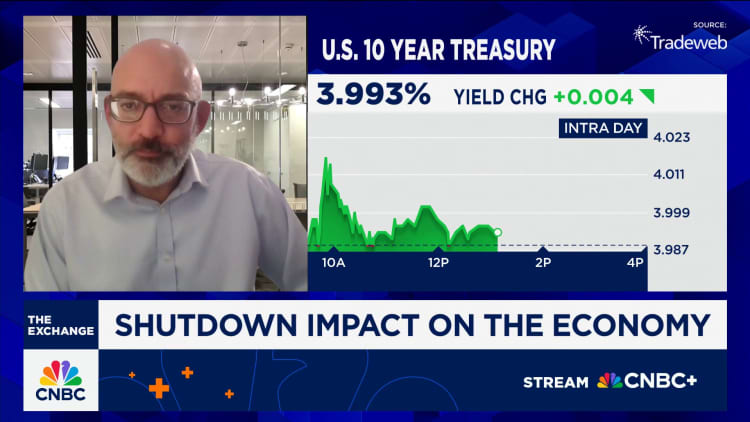Coterra shifts its view on oil, again. Here are our 3 takeaways as investors in the stock

Coterra Energy is refocusing on oil. CEO Thomas Jorden shared the company’s decision not to reduce its oil rig count at the JPMorgan Energy conference earlier this week. Here are several key takeaways for investors. 1. For starters, the move signals that Coterra has regained confidence in the direction of oil markets — and inherent in that is more confidence in the outlook for the economy. Alongside its first-quarter earnings report in early May, Coterra said it planned to shift some capital expenditures from its oil assets into natural gas production amid concerns about a potential tariff-driven recession that would dent demand for oil, leading to lower prices. As part of the shift, the company said it planned to reduce its oil rig count in the Permian Basin to seven. They’re now walking back that change. “We’re holding firm right now at nine [oil rigs] and we have very few under contract, so we have the flexibility,” Jorden said at the conference Tuesday. “We were looking at the possibility of a collapse,” he added, explaining the company’s view last month. “We’re feeling a little better about that now.” @CL.1 3M mountain WTI three month performance When Coterra reported its Q1 on May 5, U.S. oil benchmark West Texas Intermediate crude had fallen around 20% since President Donald Trump announced his “reciprocal” tariffs in early April. Oil cartel OPEC was also signaling that it would increase production. As Trump walked back his most aggressive trade policies, the outlook for the economy improved, which was supportive for oil prices. Then, in mid-June, the start of the Iran-Israel conflict caused a temporary oil price spike as traders worried about supply disruptions. Prices have given back those gains as tensions eased. WTI has dropped more than 11% this week alone as the market deemed Iran-Israel conflict, and last weekend’s U.S. bombing of three Iranian nuclear sites, not systemically concerning for now. With few rigs under contract, Coterra can scale back if circumstances change yet again. But for now, we were encouraged to hear Coterra isn’t worried about a price collapse driven by a recession. 2. In reacting to the first-quarter earnings, Mizuho analysts flagged concerns that Coterra’s lower oil activity spending could have negative implications down the road, particularly as it relates to the company’s three-year goal of oil production growth of at least 5% annually on average. “We believe the impact will be felt in 2026-27 given the loss in momentum,” the analysts wrote in a note to clients. Those worries might be alleviated as maintaining nine rigs could help Coterra hit its three-year goal, which the company outlined in February . The increased rig count, however, does put Coterra’s capital expenditure spending at the higher end of its 2025 guidance, which falls between $2 billion and $2.3 billion. Keep in mind, though, investors may not fret capex coming in at the high end of the range if it’s the result of more rigs staying in operation with drilling being done efficiently. It would be concerning if drilling activity fell off, but capex went higher. 3. At the same time, Coterra’s decision to keep its oil rig count steady for now is not impacting the company’s plans to increase activity in the natural gas-focused Marcellus Shale. “We are proceeding,” Jorden said at the conference. “Gas prices look very constructive and we really do see the Marcellus as a really meaningful part of our program go forward.” @NG.1 3M mountain Natural Gas three month peformance Coterra stands to win big on natural gas if the Constitution Pipeline project, which starts in the Marcellus, were to get revived. Coterra also has active nat gas assets in the Anadarko Basin and started drilling again in the Dimock Township of Pennsylvania following a 12-year-long ban that was lifted in December 2023. The company plans to drill 11 wells this year and expects to have around 17 total in the years to come. (Jim Cramer’s Charitable Trust is long CTRA. See here for a full list of the stocks.) As a subscriber to the CNBC Investing Club with Jim Cramer, you will receive a trade alert before Jim makes a trade. Jim waits 45 minutes after sending a trade alert before buying or selling a stock in his charitable trust’s portfolio. If Jim has talked about a stock on CNBC TV, he waits 72 hours after issuing the trade alert before executing the trade. THE ABOVE INVESTING CLUB INFORMATION IS SUBJECT TO OUR TERMS AND CONDITIONS AND PRIVACY POLICY , TOGETHER WITH OUR DISCLAIMER . NO FIDUCIARY OBLIGATION OR DUTY EXISTS, OR IS CREATED, BY VIRTUE OF YOUR RECEIPT OF ANY INFORMATION PROVIDED IN CONNECTION WITH THE INVESTING CLUB. NO SPECIFIC OUTCOME OR PROFIT IS GUARANTEED.
<




